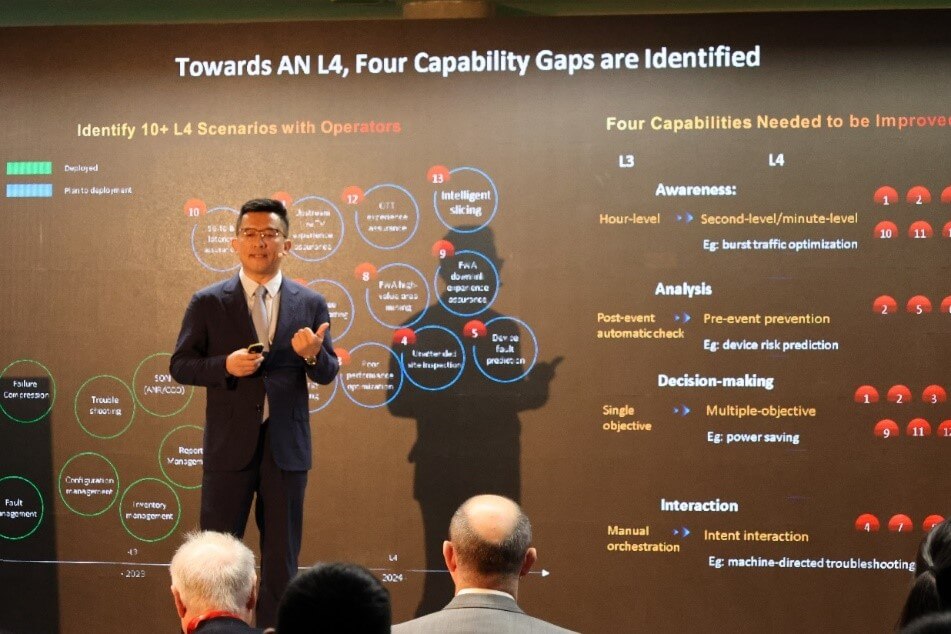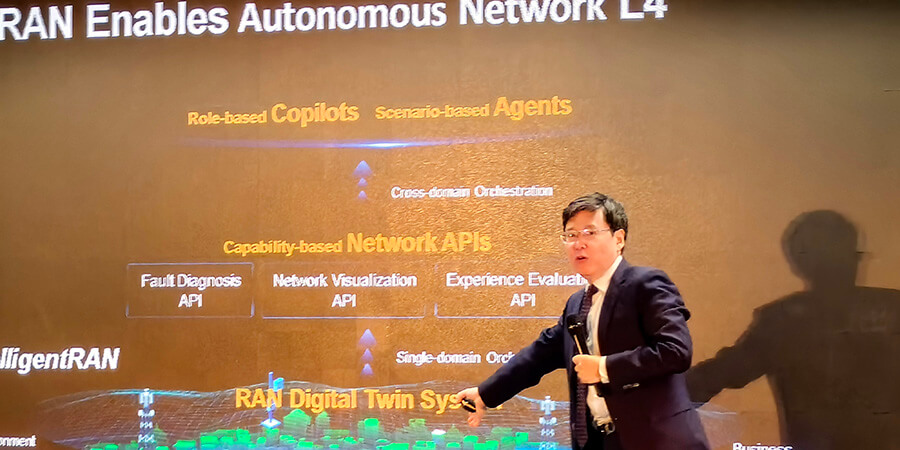At the MWC Barcelona 2024, Huawei held the 7th Intelligent RAN Summit. Carriers and industry partners from all over the world gathered to share the latest wireless network intelligence technologies, including the telecom foundation model and digital twin system, and discuss the characteristics of each generation of autonomous networks, and their application scenarios, and commercial practices.
Dang Wenshuan, Huawei's Chief Network Architect, said: "Mobile broadband communication with millions of dedicated working employees have been deeply integrated in human life. With intelligent RAN, let's start evolving the mobile network to a new innovation high and open a new industry reality that empower employees with a better working place and satisfies our customers with better experiences and better lives." He further elaborated on how Huawei's telecom foundation model collaborates with the RAN digital twin systems to build role-based Copilots (AI assistants) and scenario-based Agent (intelligent entity) applications, helping carriers empower employees, improve user satisfaction, and boost network productivity.
Speakers at the summit came to the following conclusions:
- In terms of industry trends, L4 autonomous networks have become a strategic goal in the digital transformation of mainstream carriers, helping them transform from communications service providers (CSPs) into digital service providers (DSPs).
- Regarding network evolution, it is generally believed that real-time perception, multi-objective decision-making, prediction and prevention, and intent interaction are key to leveraging L4 autonomous networks.
- In terms of architecture evolution, intelligence needs to be deployed at each layer of the wireless network architecture, including the operational support system (OSS), operations and maintenance center (OMC), and wireless NES.
- As for technological evolution, the foundation model will play a key role in building the intelligent RAN. Multi-modal network content generation, multi-agent collaboration, and lightweight foundation models are three major research directions in this field.
Zhao Zhenlong, Vice President of Huawei MAE Product Line, shared the latest progress Huawei has made regarding Intelligent RAN. The telecom foundation model has been introduced on the service side, and the RAN digital twin system was constructed on the RAN side. Huawei took the lead in launching valuable applications with key L4 capabilities in the industry. This includes:
- iPowerStar: Energy efficiency is improved from the time, space, frequency, and power dimensions. It uses multi-objective collaboration technologies to allow carrier networks to maintain optimal balance between performance and energy efficiency, reducing carbon emissions by 30%.
- iKeyEvent: Based on spatio-temporal traffic prediction technology, risks can be predicated, and emergency plans can be automatically generated for big events so network risks can be monitored and mitigated within seconds.
- iLiveStreaming: Through intelligent SLA trend prediction and dynamic time, frequency, and space resources allocation, visualized management of service experience is achieved, delivering a reliability higher than 95% for uplink livestreaming.
 Zhao Zhenlong, Vice President of Huawei MAE Product Line
Zhao Zhenlong, Vice President of Huawei MAE Product Line
At the summit, Huawei called on industry partners to accelerate their technological innovation through cooperation, encouraging them to promote the implementation of intelligent interface and application standards, create a prosperous industry ecosystem, seek business success, and jointly move towards a fully-connected, intelligent world.










